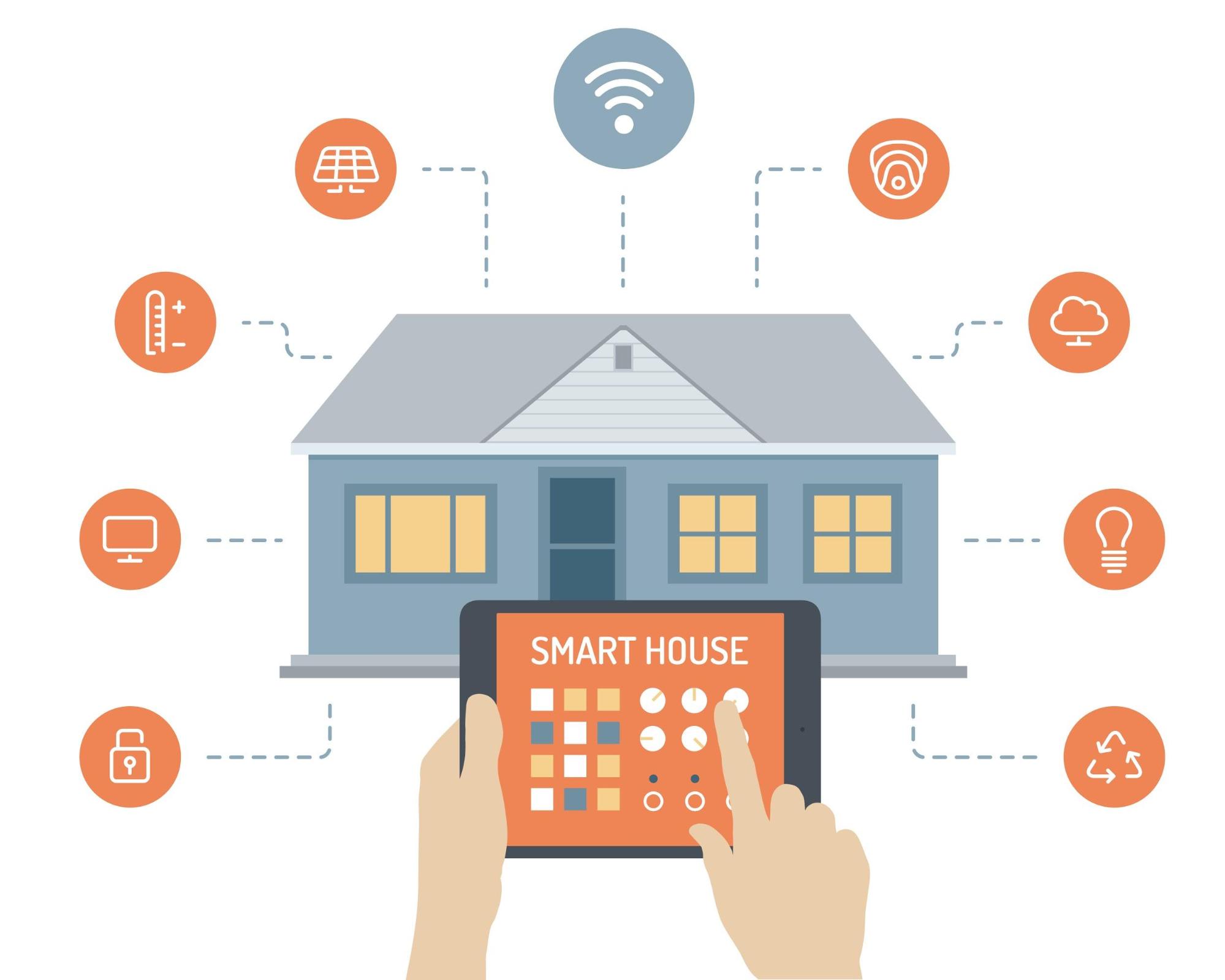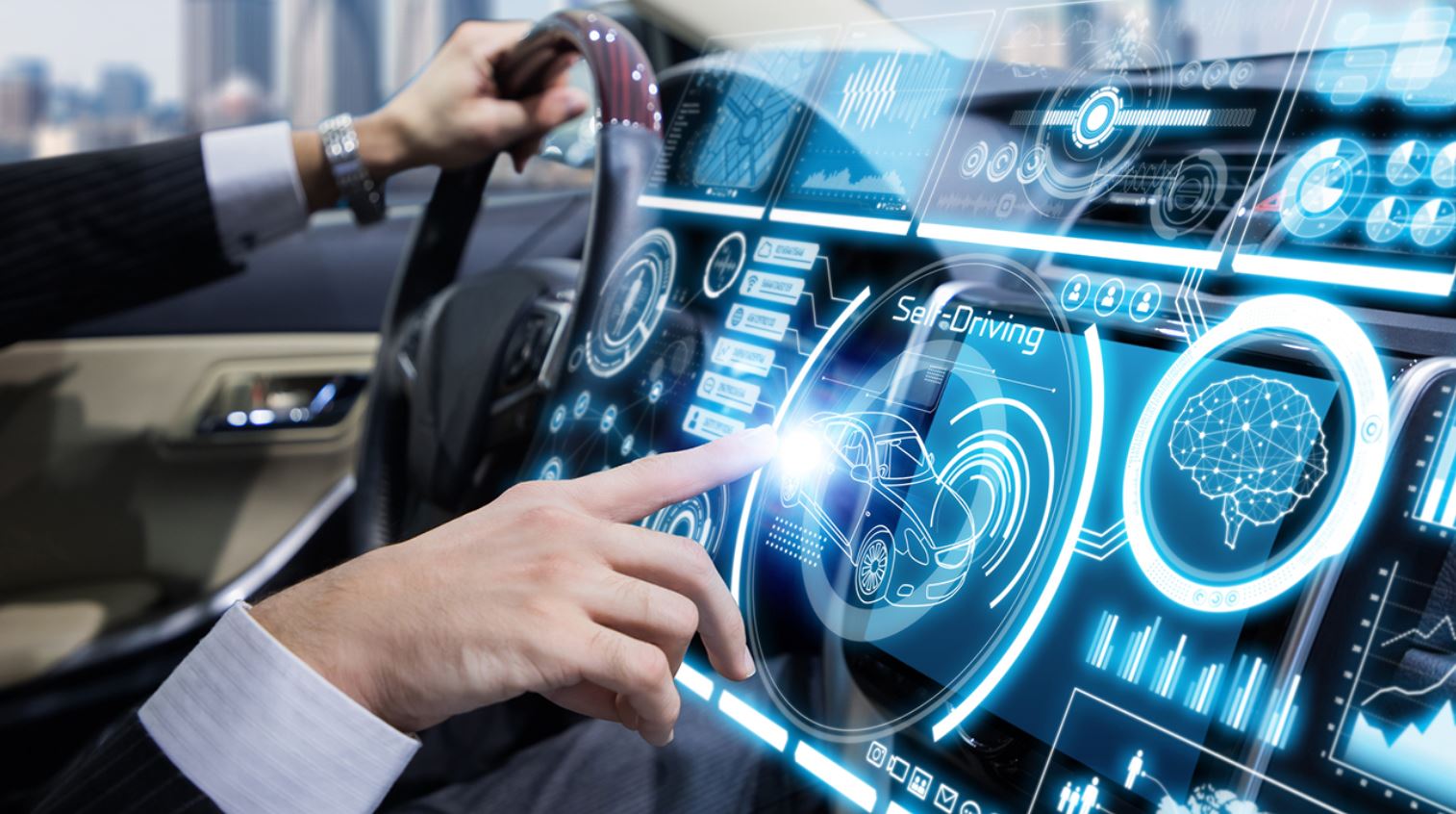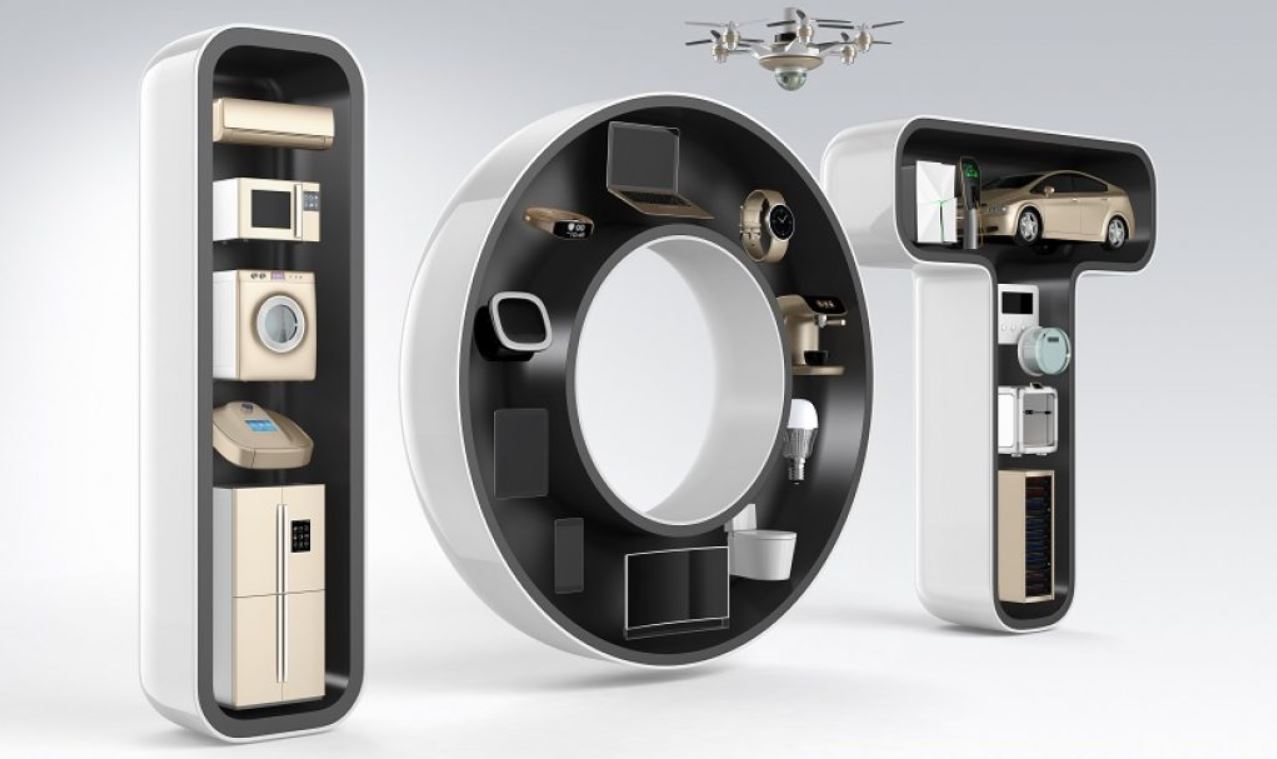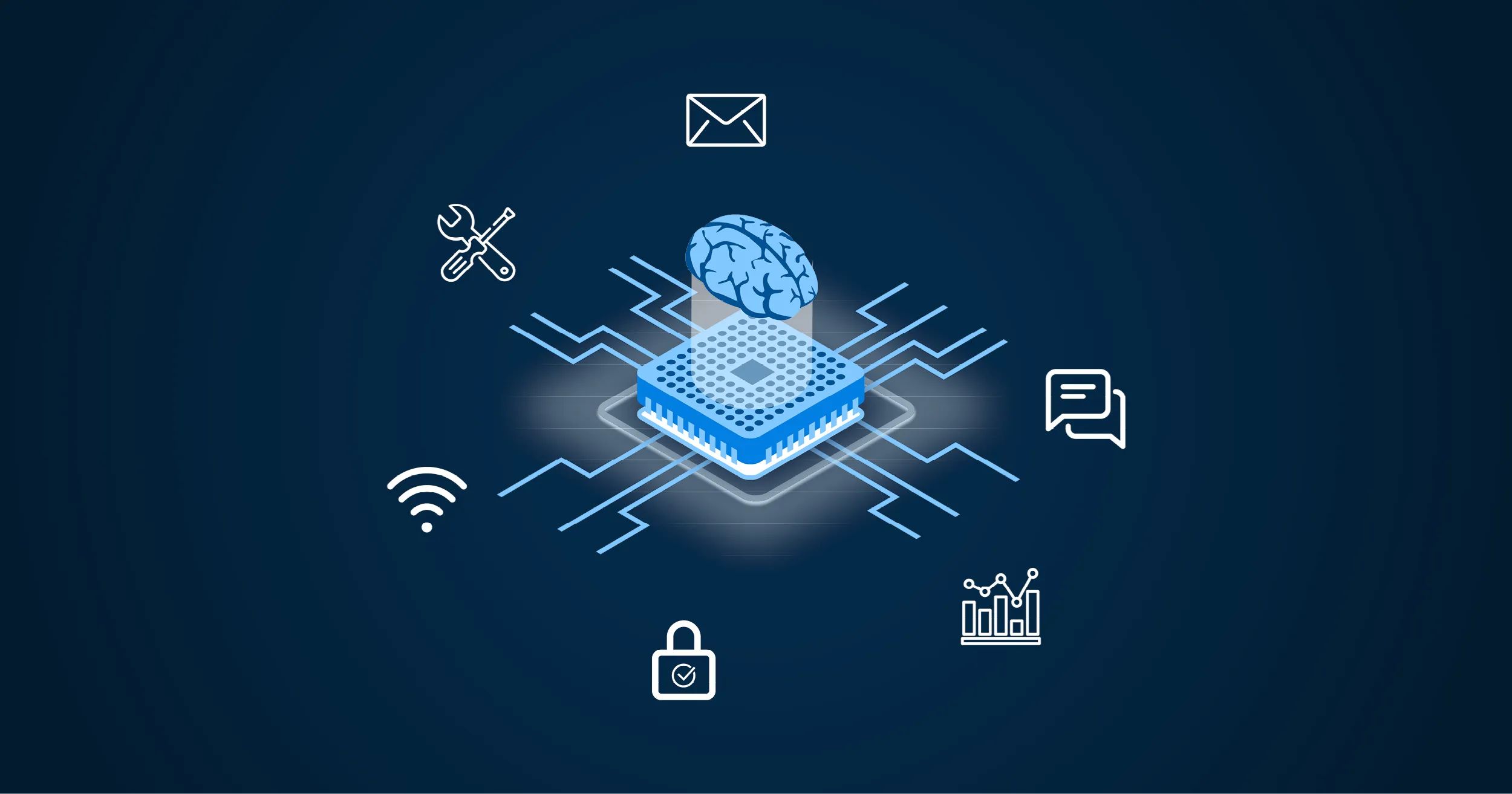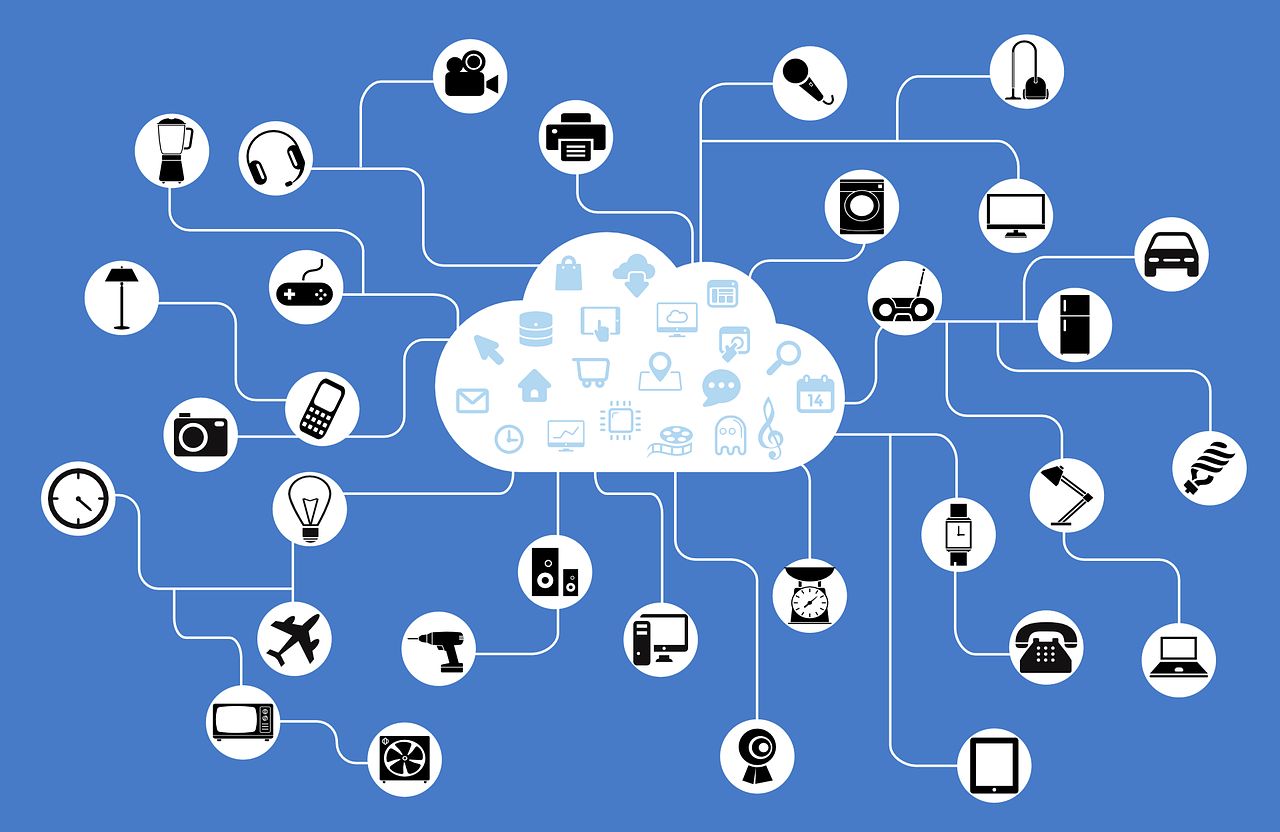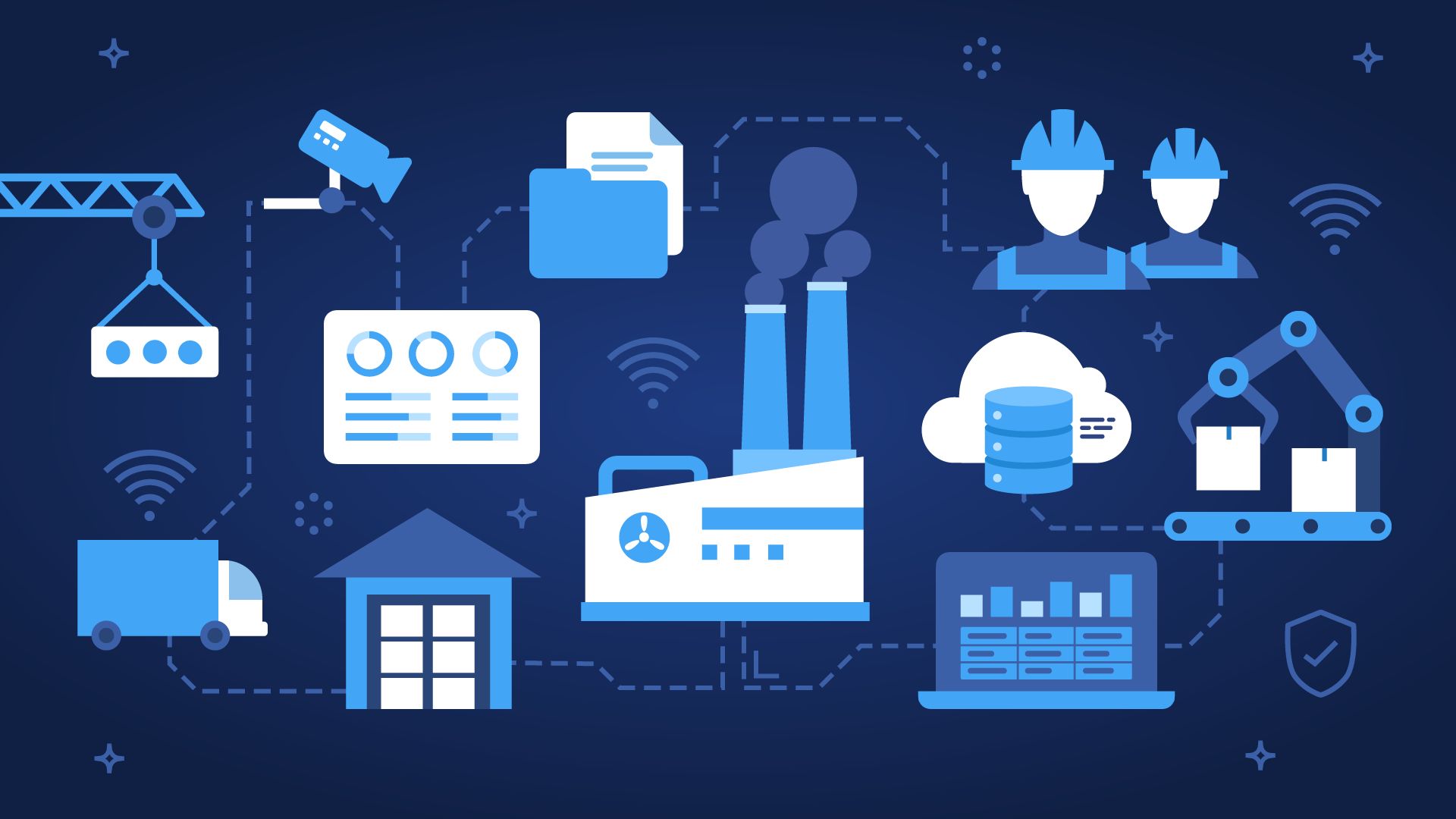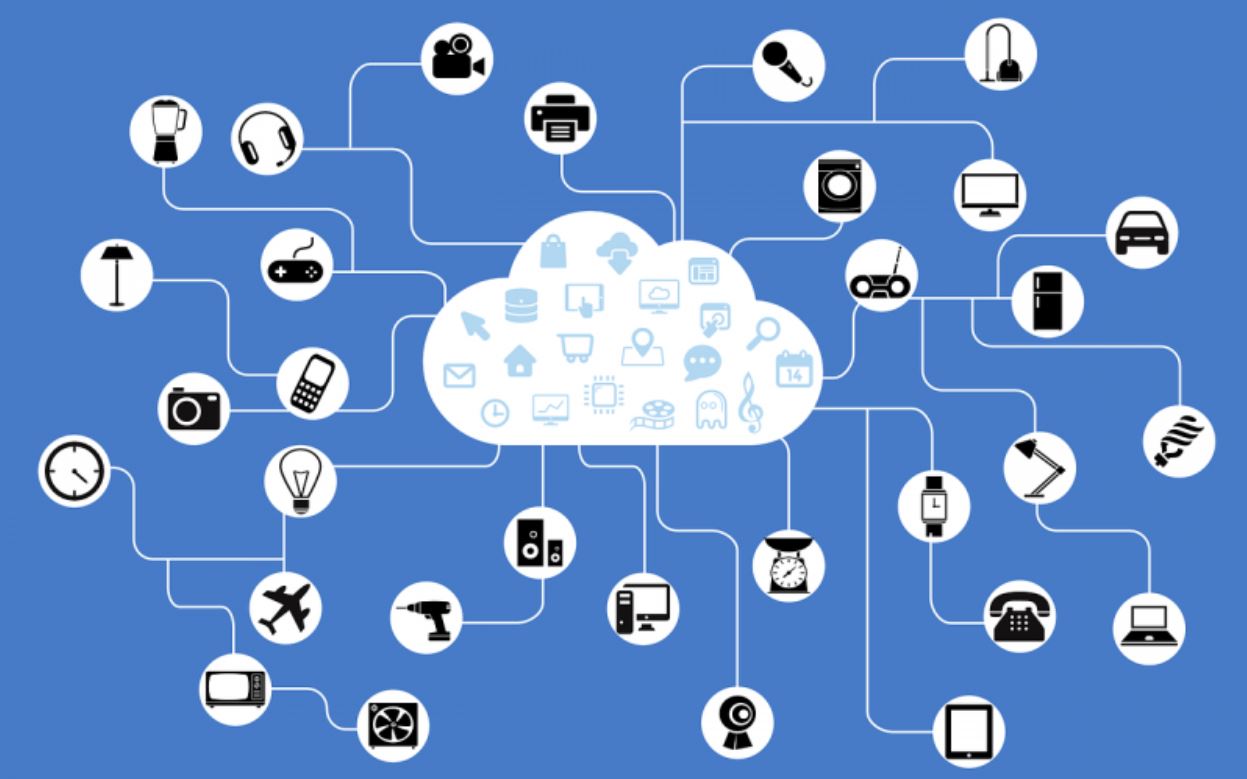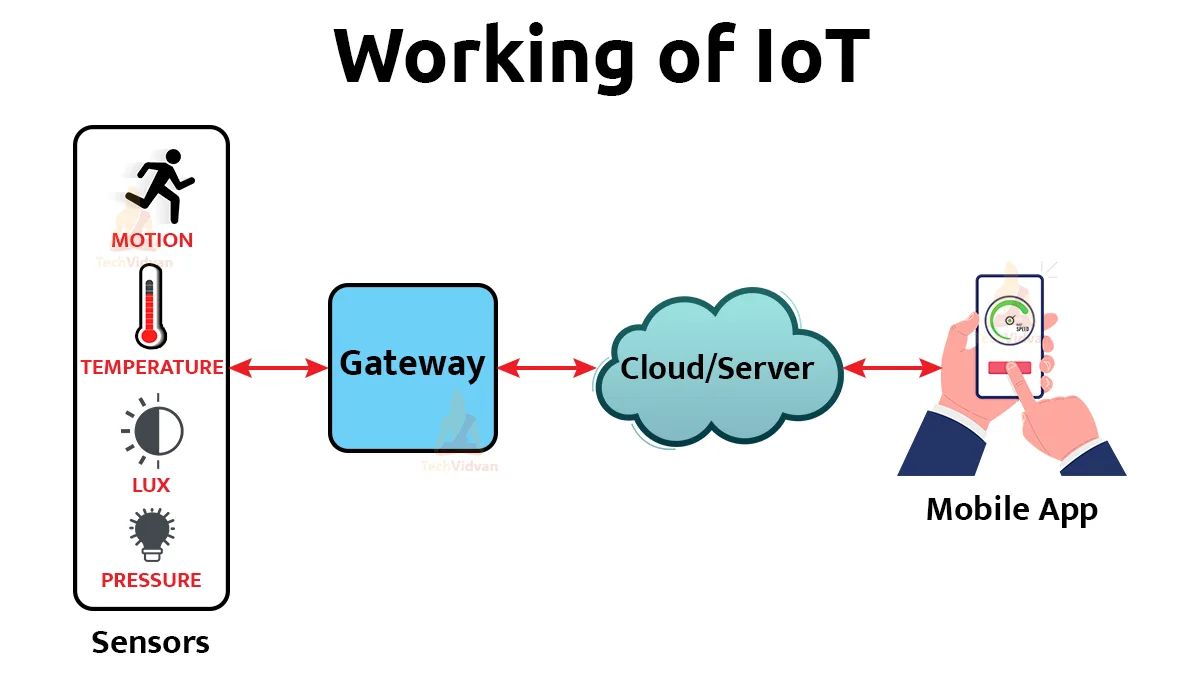Smart Home Devices
Smart home devices have revolutionized the way we interact with our living spaces, making our homes more efficient, convenient, and secure. These devices, equipped with embedded computers and connected through the Internet of Things (IoT), bring a new level of automation and control to our everyday lives.
One of the most popular smart home devices is the smart thermostat. These devices can learn and adapt to our preferences, adjusting the temperature automatically to ensure comfort while saving energy. With the ability to be controlled remotely through a smartphone app, we can also adjust the temperature even when we are away from home.
Another essential smart home device is the intelligent lighting system. These systems allow us to control the lights in our home using voice commands or a mobile app. We can create personalized lighting schedules, dim the lights, or even change their colors to suit different moods or activities.
Smart security systems have also become increasingly popular. With embedded cameras, motion sensors, and remote access, we can monitor our homes from anywhere, receive real-time alerts, and even communicate with visitors using two-way audio. These systems provide peace of mind and enhance the overall safety of our homes.
Moreover, smart home devices extend beyond individual appliances. They allow for seamless integration, creating a connected ecosystem. For example, a smart refrigerator can notify us when groceries are running low and even place an order for us. Smart speakers with voice assistants can control multiple devices, from TVs to door locks, with a simple command.
The impact of smart home devices on our daily lives is significant. They not only offer convenience and efficiency but also contribute to energy savings and increased home security. With a few taps on our smartphones or a simple voice command, we can control and monitor our homes, making our lives more comfortable and connected.
Wearable Technology
Wearable technology has become increasingly popular in recent years, seamlessly integrating into our daily lives and transforming the way we monitor our health, stay connected, and enhance our overall well-being. These small but powerful devices, equipped with embedded computers and sensors, have revolutionized the way we interact with technology.
One of the most well-known types of wearable technology is fitness trackers. These devices are capable of tracking our steps, heart rate, sleep patterns, and even calories burned. With real-time feedback and data analysis, we can make informed decisions about our fitness routines, set goals, and monitor our progress. Wearable fitness technology has empowered individuals to take control of their health and achieve their wellness goals.
Another popular category of wearable technology is smartwatches. These versatile devices offer a wide range of features, including notifications, messaging, fitness tracking, and even mobile payment capabilities. With a smartwatch, we can receive calls, read messages, track our workouts, and stay connected without having to constantly check our smartphones. They have become an indispensable accessory in our connected world.
Wearable technology has also made significant advancements in the healthcare industry. With devices such as smart glasses or smart patches, healthcare professionals can have access to real-time patient data, allowing for more accurate diagnoses and personalized treatment plans. Wearable medical devices, like insulin pumps or continuous glucose monitors, have improved the management of chronic conditions and increased the quality of life for patients.
Furthermore, wearable technology has expanded beyond fitness and healthcare. Smart clothing, such as sensors embedded in athletic apparel, can provide insights into our performance and form during workouts. Virtual reality headsets offer immersive experiences for gaming and entertainment. Even jewelry has become “smart,” with smart rings that can track sleep patterns or receive notifications discreetly.
The impact of wearable technology on our daily lives is profound. These devices have seamlessly integrated into our routines, providing us with valuable insights into our health and wellness, keeping us connected, and enhancing our overall experiences. Whether it’s tracking our steps, monitoring our heart rate, or receiving notifications on our wrists, wearable technology has become an essential part of the modern lifestyle.
Connected Vehicles
Connected vehicles are ushering in a new era of transportation, transforming the way we drive, commute, and interact with our cars. Through the integration of embedded computers and the IoT, these vehicles are equipped with advanced features, connectivity, and real-time data that enhance both safety and convenience.
One of the major benefits of connected vehicles is improved safety. With technologies such as advanced driver assistance systems (ADAS), vehicles can sense their surroundings, detect potential hazards, and warn drivers of potential collisions. Features like automatic emergency braking, lane-keeping assist, and adaptive cruise control help reduce the risk of accidents and make driving safer for everyone on the road.
Connectivity in vehicles also provides a wealth of information and entertainment options. With in-car infotainment systems, drivers and passengers can access maps, music streaming services, and hands-free communication. Integration with smartphones allows for seamless access to contacts, messages, and apps, all while keeping our eyes on the road and hands on the wheel.
Furthermore, connected vehicles enable vehicle-to-vehicle (V2V) and vehicle-to-infrastructure (V2I) communication, enhancing overall traffic efficiency. Through real-time data exchange, vehicles can alert each other about traffic conditions, accidents, and hazards, allowing for better traffic flow and smoother navigation. Additionally, connected vehicles can receive real-time updates on road conditions, weather, and construction, helping drivers make informed decisions and choose the best routes.
Connected vehicles are also contributing to the advancement of autonomous driving. With embedded sensors, cameras, and the ability to communicate with other vehicles and infrastructure, these vehicles can navigate and make informed decisions without human intervention. While fully autonomous vehicles are still being developed, connected vehicles are laying the foundation for a future where transportation is safer, more efficient, and less reliant on human interaction.
The impact of connected vehicles on our daily lives is significant. They are changing the way we drive, making our commutes safer, more enjoyable, and more efficient. With advanced safety features, seamless connectivity, and the potential for autonomous driving, connected vehicles are revolutionizing the transportation industry and reshaping our relationship with our cars.
Healthcare and Medical Devices
The integration of embedded computers and the Internet of Things (IoT) has had a major impact on healthcare and medical devices, revolutionizing patient care, diagnostics, monitoring, and overall health management. These advancements in technology have improved the accuracy, efficiency, and accessibility of healthcare services.
One area greatly influenced by these technologies is remote patient monitoring. With wearable devices and medical sensors, healthcare professionals can remotely monitor patients’ vital signs, track health conditions, and intervene if necessary. This allows for early detection of health issues, timely interventions, and reduced hospitalizations, particularly for patients with chronic conditions such as diabetes or hypertension.
Medical devices, such as smart insulin pumps and continuous glucose monitors, have transformed the management of diabetes. These devices can automatically adjust insulin delivery based on real-time glucose levels, improving glycemic control and reducing the risk of complications. Patients can conveniently monitor their glucose levels, track their blood sugar trends, and make informed decisions about their daily activities and medications.
Embedded computers and the IoT have also led to the development of advanced imaging technologies. Medical imaging devices, such as MRI and CT scanners, equipped with powerful computational capabilities, provide high-resolution images for accurate diagnoses. Moreover, these devices can securely transfer imaging data to specialists for remote consultations, leading to faster and more effective treatment plans.
Electronic health records (EHRs) have also transformed healthcare processes. With digital records, patient information can be accessed securely and conveniently, allowing healthcare providers to make informed decisions and coordinate care effectively. EHRs have streamlined workflows, minimized errors, and improved patient safety.
Another groundbreaking application of healthcare technology is telehealth and telemedicine. Through video consultations, remote patient monitoring, and digital health platforms, individuals can have access to healthcare services from the comfort of their homes. Telehealth has increased access to healthcare, particularly in rural areas or for individuals with limited mobility, and has proven crucial during times of crisis, such as the COVID-19 pandemic.
The impact of healthcare and medical devices powered by embedded computers and the IoT is immense. These technologies have improved the quality of care, enhanced patient outcomes, and increased the efficiency of healthcare delivery. With remote monitoring, advanced diagnostics, and telehealth solutions, healthcare has become more personalized, accessible, and convenient.
Industrial Automation
Industrial automation, fueled by embedded computers and the Internet of Things (IoT), has transformed the manufacturing landscape, making processes more efficient, cost-effective, and reliable. These technologies offer advanced capabilities that optimize production, improve quality, and enhance overall operational efficiency.
One of the key benefits of industrial automation is increased productivity. With robots and automated systems, tasks that were previously performed manually can now be completed at a much faster pace and with greater precision. This results in higher output, improved consistency, and reduced errors. Automation also reduces the reliance on human labor, allowing workers to focus on more complex, strategic tasks.
Embedded computers and IoT devices facilitate real-time monitoring and data analysis, enabling predictive maintenance. Sensors and connected devices can collect data on equipment performance, identify potential issues, and trigger alerts or schedule maintenance activities. By proactively addressing maintenance needs, downtime is minimized, and costly disruptions are avoided, leading to increased productivity and cost savings.
Furthermore, automation enables the optimization of energy consumption. Smart sensors can monitor and control the usage of energy-intensive equipment, adjusting settings for maximum efficiency. This not only reduces energy costs but also contributes to sustainability efforts, minimizing environmental impact.
Industrial automation also enhances safety in the workplace. Robots and autonomous systems can handle hazardous tasks, reducing the risk of workplace accidents and ensuring the safety of workers. Embedded sensors can detect potential dangers and promptly alert operators to take necessary precautions. Safety protocols can be seamlessly integrated into the automation process, minimizing human error and promoting a secure working environment.
Additionally, automation provides valuable insights through data analysis. By collecting and analyzing vast amounts of data, manufacturers can identify patterns, trends, and areas for improvement. This leads to informed decision-making, process optimizations, and the ability to identify potential bottlenecks or issues before they impact productivity.
The impact of industrial automation powered by embedded computers and the IoT is indisputable. It has revolutionized manufacturing processes, increasing productivity, improving quality, and enhancing safety. With real-time monitoring, predictive maintenance, energy optimization, and data-driven insights, industrial automation has ushered in a new era of efficiency and competitiveness in the manufacturing industry.
Smart Cities
The concept of smart cities, driven by embedded computers and the Internet of Things (IoT), is transforming urban living by leveraging technology to improve sustainability, efficiency, and the overall quality of life for citizens. These advancements are reshaping the way cities operate, integrate services, and interact with their residents.
Connected infrastructure is a key component of smart cities. Sensors installed in various parts of the city can collect data on traffic patterns, energy usage, waste management, and environmental factors. This data is then used to optimize transportation systems, reduce congestion, improve waste management practices, and enhance overall resource allocation.
Mobility is a major focus of smart cities. Intelligent transportation systems enable efficient traffic management, reducing commute times and easing congestion. Connected public transportation systems provide real-time updates on routes, schedules, and arrival times, ensuring smoother and more convenient journeys for residents. Additionally, smart parking systems help drivers find available parking spaces and streamline parking operations.
Energy efficiency is another important aspect of smart cities. Connected buildings can optimize energy consumption by automatically adjusting temperature, lighting, and energy usage based on occupancy and environmental conditions. Renewable energy sources, such as solar panels and wind turbines, can be integrated into the city’s infrastructure, reducing reliance on non-renewable resources and minimizing environmental impact.
Public safety is greatly enhanced in smart cities through the use of technology. Video surveillance cameras, connected emergency response systems, and smart street lighting contribute to increased safety and faster response times. Real-time monitoring and data analysis help identify potential safety hazards and enable proactive measures to be taken.
Citizen engagement and participation are encouraged through smart city initiatives. Mobile applications and digital platforms allow residents to access city services, report issues, and provide feedback to local authorities. Open data initiatives make government data accessible to the public, fostering transparency and collaboration between citizens and their local government.
Moreover, smart cities prioritize sustainability by promoting green initiatives. Waste management systems are optimized using data analysis to reduce waste and increase recycling rates. Smart grids monitor and manage energy distribution, ensuring efficient usage and reducing overall energy consumption. These efforts contribute to a cleaner and more sustainable urban environment.
The impact of smart cities, driven by embedded computers and the IoT, is profound. They enhance urban living, improve resource management, optimize transportation systems, and promote sustainability. By utilizing technology and data-driven insights, smart cities are continuously evolving to meet the needs of citizens and create a more connected, sustainable, and livable urban environment.
Retail and E-commerce
The integration of embedded computers and the Internet of Things (IoT) has brought about a significant transformation in the retail and e-commerce industry. This technological advancement has revolutionized the way customers shop, interact with brands, and experience retail, making it more convenient, personalized, and efficient.
E-commerce has seen exponential growth due to the capabilities offered by embedded systems and connectivity. Customers can now browse and purchase products online from the comfort of their homes, eliminating the need to visit physical stores. The rise of online marketplaces and platforms has made it easier for businesses of all sizes to reach a global customer base and expand their market reach.
Embedded systems and IoT devices have also enabled the creation of smart retail environments. Physical stores can be equipped with beacons, sensors, and digital signage to enhance the in-store experience. These technologies can provide personalized recommendations, offer targeted promotions, and enable seamless transactions through mobile payment options.
Inventory management and supply chain processes have also been revolutionized by embedded systems and IoT devices. Real-time data collection allows for accurate tracking of stock levels, predicting demand patterns, and optimizing order fulfillment. This leads to more efficient inventory management, reduced stockouts, and improved customer satisfaction.
Another area greatly impacted by these technologies is the customer experience. Chatbots and virtual assistants powered by artificial intelligence can provide instant support and answer customer queries, enhancing the overall shopping experience. Personalization algorithms analyze customer data to offer tailored product recommendations, personalized offers, and targeted marketing campaigns.
Furthermore, embedded devices and IoT technology have improved the efficiency of last-mile delivery. Delivery vehicles equipped with GPS systems and route optimization algorithms can ensure faster and more accurate deliveries. Customers can track the progress of their orders in real-time, improving transparency and reducing delivery-related frustrations.
The impact of embedded systems and the IoT on retail and e-commerce is undeniable. These technologies have transformed the way customers shop, streamlined inventory management, and optimized supply chain operations. With personalized experiences, seamless transactions, and efficient delivery options, retail and e-commerce have evolved to meet the changing expectations of customers in the digital age.
Entertainment and Leisure
Embedded computers and the Internet of Things (IoT) have revolutionized the entertainment and leisure industry, transforming the way we consume media, enjoy recreational activities, and interact with entertainment devices. These technologies have enhanced our entertainment experiences, making them more immersive, interactive, and convenient.
One of the biggest shifts in the entertainment industry is the rise of streaming services. With embedded systems and connectivity, we can now access a vast library of movies, TV shows, and music on-demand through platforms like Netflix, Hulu, and Spotify. This has provided us with unprecedented flexibility in choosing what we want to watch or listen to and when we want to enjoy it.
Gaming has also been greatly influenced by embedded computers and IoT devices. With powerful gaming consoles and connected devices, we can engage in multiplayer gaming experiences with players from around the world. Virtual reality (VR) and augmented reality (AR) technologies have added an extra layer of immersion, taking gaming to new heights by creating realistic and interactive environments.
Embedded systems and IoT devices have also transformed the way we enjoy live events and performances. We can now stream live concerts, sports matches, and theatrical performances from the comfort of our homes. Virtual attendance technology, such as 360-degree cameras and live streaming platforms, provides an immersive and interactive experience, allowing us to feel like we are part of the action even from a remote location.
Smart home entertainment systems have become increasingly popular. With voice-controlled devices like smart speakers or digital assistants, we can easily control our audio and video devices, stream content, and create personalized playlists, all with a simple command. Home theaters equipped with connected devices provide a cinematic experience right in our living rooms.
Embedded computers and IoT technology have also made leisure activities more engaging and convenient. IoT-enabled fitness trackers allow us to seamlessly track our workouts, set goals, and measure our progress, motivating us to live a healthier lifestyle. Smart home gyms offer personalized workouts and virtual coaching sessions, bringing the gym experience home.
The impact of embedded computers and the IoT on entertainment and leisure is significant. These technologies have created a more connected, interactive, and personalized entertainment landscape. From streaming services and gaming experiences to virtual attendance at live events and immersive home entertainment systems, embedded systems and IoT devices have transformed how we entertain ourselves and engage in leisure activities.
Energy Efficiency
Embedded computers and the Internet of Things (IoT) have played a crucial role in promoting energy efficiency, revolutionizing the way we monitor, control, and optimize our energy consumption. These technologies have enabled us to reduce our environmental footprint, save energy costs, and create a more sustainable future.
One of the key applications of embedded systems and IoT devices is smart energy management. Connected thermostats, smart lighting systems, and intelligent appliances allow us to monitor and control our energy usage more effectively. With real-time data and automation, we can adjust temperature settings, turn off lights remotely, and schedule energy-intensive tasks during off-peak hours, optimizing energy consumption and reducing wastage.
Embedded sensors and meters enable the measurement and analysis of energy usage in various settings, from homes and offices to industrial facilities. With this data, we can identify energy inefficiencies, patterns of high consumption, and areas for improvement. This valuable insight allows us to make informed decisions about energy-saving strategies and investments.
Renewable energy sources, such as solar panels and wind turbines, are also integrated with embedded systems and IoT technology to maximize their efficiency. Embedded computers can track real-time weather conditions and adjust power generation to optimize energy output. IoT devices allow for centralized monitoring and maintenance, ensuring these renewable energy systems operate at peak performance.
Smart grids, enabled by embedded systems and IoT devices, revolutionize the distribution and management of energy. These intelligent systems monitor energy demand and supply in real-time, allowing for efficient allocation and load balancing across the grid. This optimization reduces energy wastage and ensures a stable energy supply to meet the needs of consumers.
Energy efficiency is not limited to buildings and grids alone. Embedded systems and IoT devices have also improved energy efficiency in transportation. Electric vehicles, when coupled with smart charging infrastructure, ensure energy is utilized efficiently. Electric vehicle charging stations can communicate with vehicles to optimize charging based on energy demands and availability, reducing charging costs and minimizing strain on the electrical grid.
The impact of embedded computers and the IoT on energy efficiency is evident. These technologies empower individuals, businesses, and communities to monitor and control energy consumption, optimize renewable energy generation, and improve overall energy management. By promoting responsible energy usage and implementing energy-saving measures, we can create a more sustainable future for generations to come.







